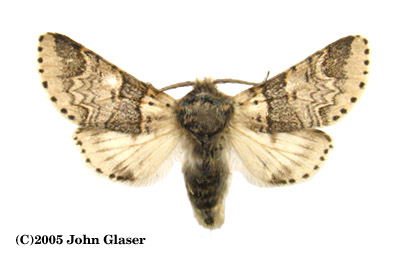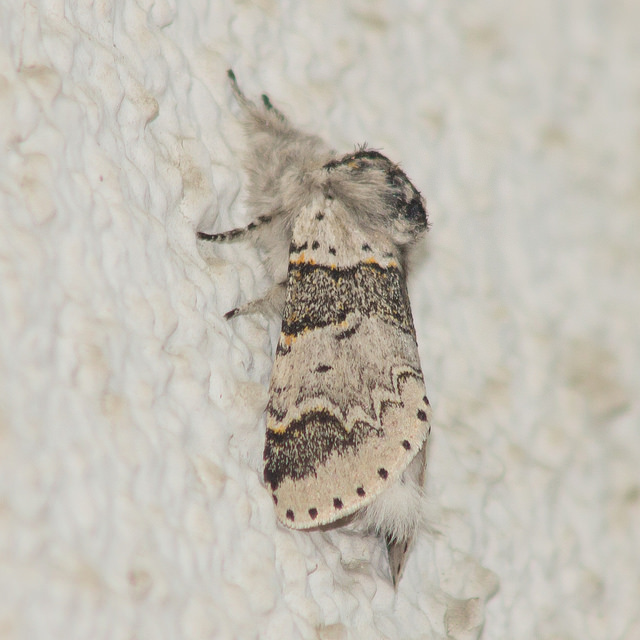Map Snapshot



5 Records
Status
"A northern species dipping into MD via the higher Appalachians" (Glaser, 2005).
Relationships
Larval host plants are primarily willows but also aspens and poplars (Miller et al., 2018).
Seasonality Snapshot
Use of media featured on Maryland Biodiversity Project is only permitted with express permission of the photographer.
A Western Furcula Moth collected in Garrett Co., Maryland (7/25/).
View Record Details
Media by
John Glaser.
A Western Furcula Moth in Nipissing District, Ontario (7/10/2015).
Media by
Timothy Reichard.
Source: Wikipedia
| Furcula occidentalis | |
|---|---|

| |
| Scientific classification | |
| Domain: | Eukaryota |
| Kingdom: | Animalia |
| Phylum: | Arthropoda |
| Class: | Insecta |
| Order: | Lepidoptera |
| Superfamily: | Noctuoidea |
| Family: | Notodontidae |
| Genus: | Furcula |
| Species: | F. occidentalis
|
| Binomial name | |
| Furcula occidentalis | |
| Synonyms | |
| |
Furcula occidentalis, the western furcula moth, double-lined furcula or willow kitten , is a moth of the family Notodontidae. It is found from southern Yukon and British Columbia to Nova Scotia, south to Maryland and west to Utah and Oregon.[2]
The wingspan is 32–45 mm. Adults are on wing from April to August in one to two generations per year.
The larvae feed on Salix and sometimes Populus species. Larvae can be found from June to September. The species overwinters in the pupal stage.
References
[edit]Wikimedia Commons has media related to Furcula occidentalis.
Wikispecies has information related to Furcula occidentalis.

